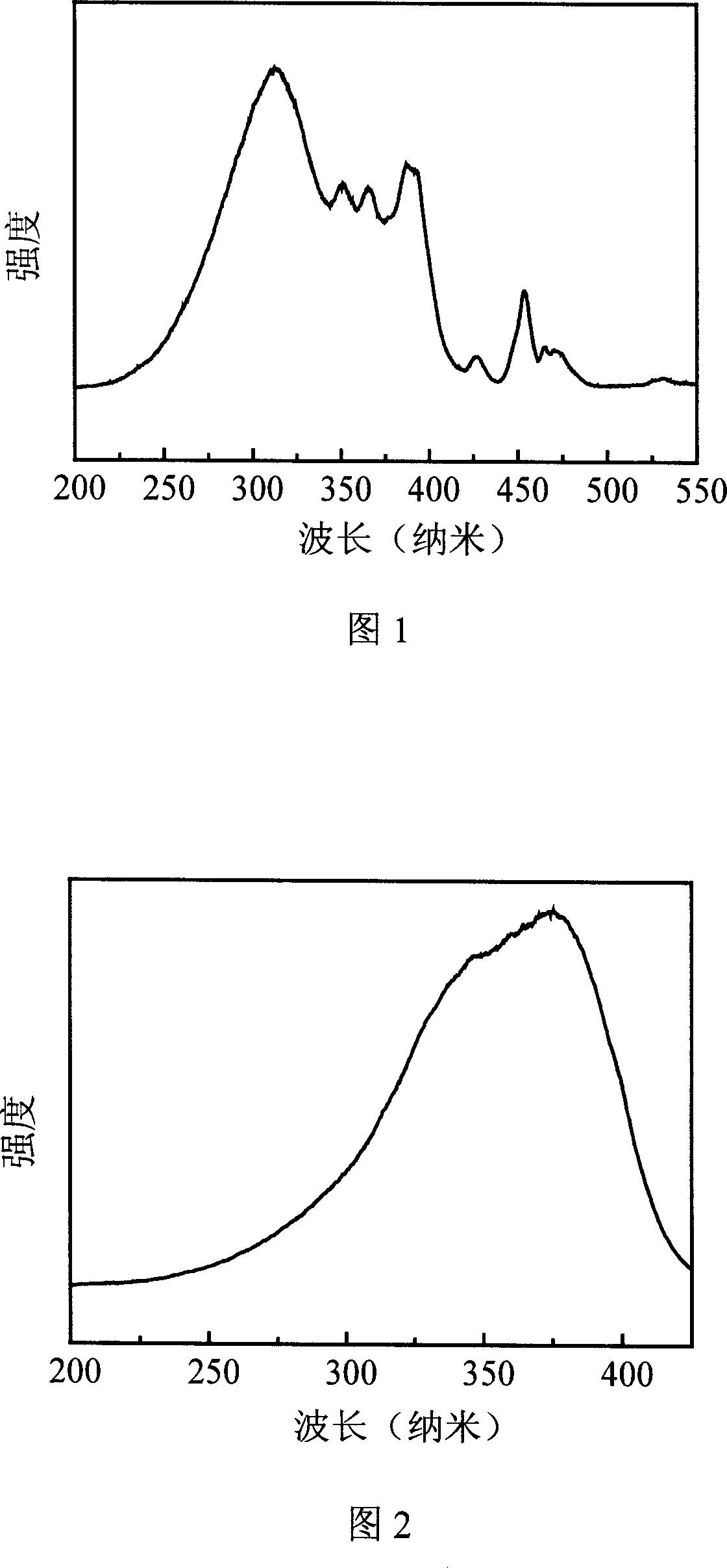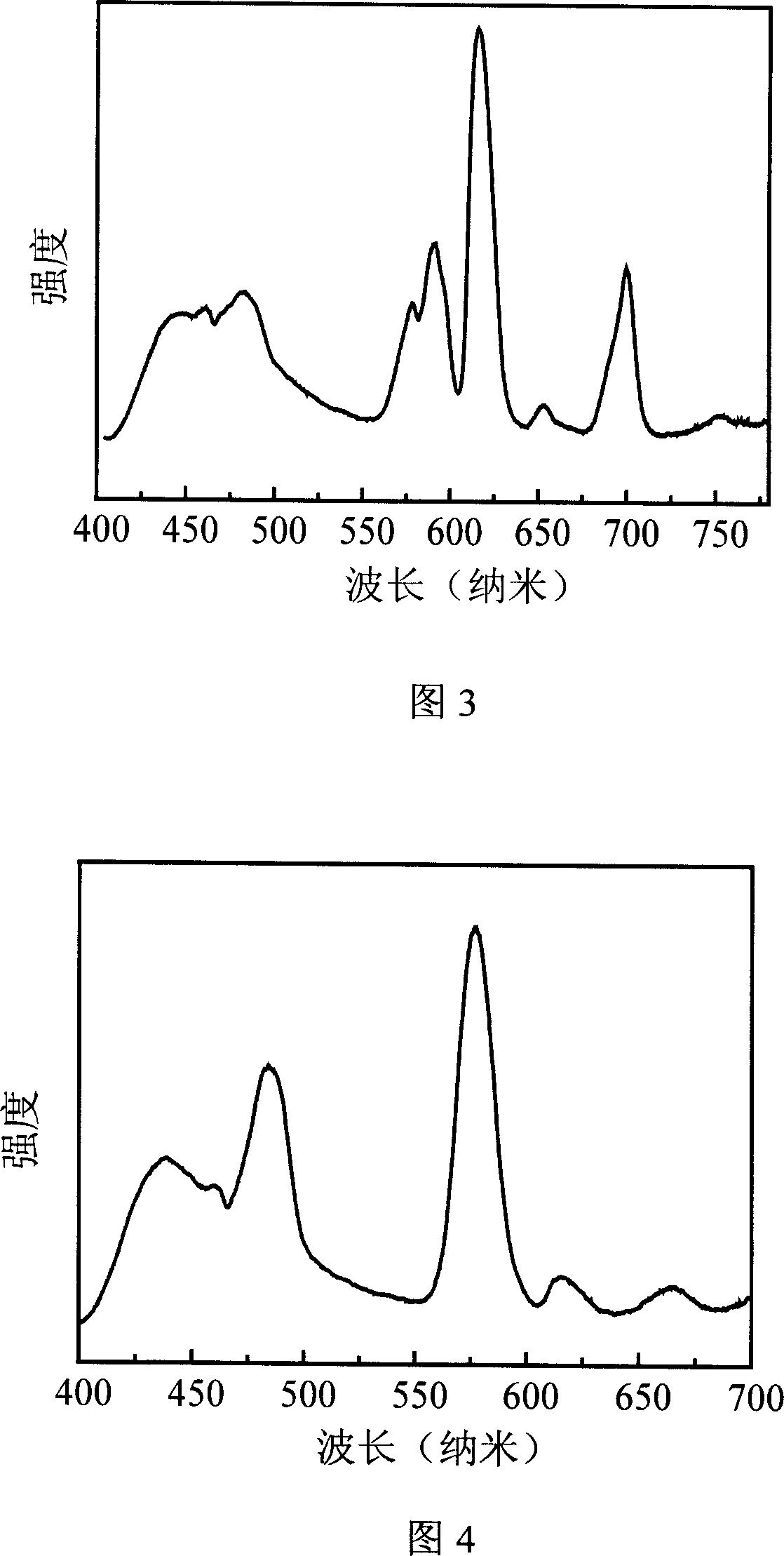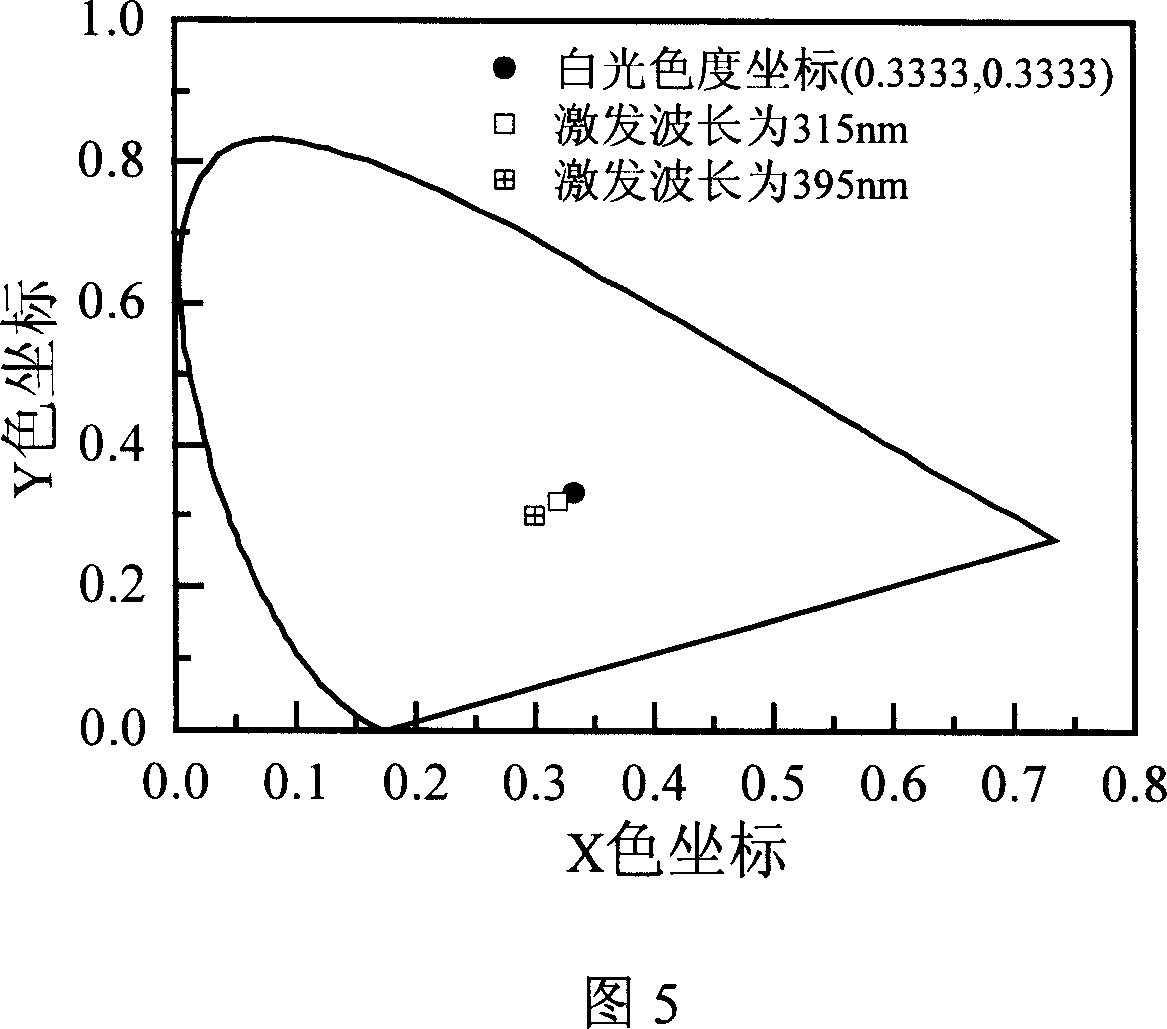Glassceramic in applying to semiconductor illumination, and preparation method
A glass ceramic and semiconductor technology, applied in the field of glass ceramics of white light LED lighting devices and their preparation, can solve the problems of obvious light decay of phosphor powder, poor temperature stability, poor resistance to ultraviolet radiation, etc., and achieve high-intensity white light emission and low cost. , the effect of high luminous stability
- Summary
- Abstract
- Description
- Claims
- Application Information
AI Technical Summary
Problems solved by technology
Method used
Image
Examples
Embodiment 1
[0029] By composition 50SiO 2 -20Al 2 o 3 -20CaF 2 -8CeF 3 -1DyF 3 -1EuF 3 Weigh SiO 2 , Al 2 o 3 , CaF 2 , CeF 3 , DyF 3 and EuF 3 , and mix the above-mentioned raw materials thoroughly, put them into a corundum crucible, and put them into a reducing atmosphere furnace that has been heated to 1350°C. The melt was quickly poured into a copper mold to obtain a glass sample. According to the DTA curve of the glass, the glass was heat-treated at 630° C. between the first crystallization peak temperature and the glass transition temperature for 2 hours to obtain glass ceramics. XRD analysis shows that CeF is distributed in the glass ceramics 3 nanocrystalline phase.
[0030] The excitation spectra of the glass ceramics prepared in this example under monitoring at 576nm and 440nm are shown in Figure 1 and Figure 2 respectively, and the results show that the effective excitation bands are all located at 300nm-400nm. Figure 3 and Figure 4 show the emission spectra of ...
Embodiment 2
[0032] By composition 45SiO 2 -25Al 2 o 3 -5Na 2 O-5NaF-10MgF 2 -9CeF 3 -1DyF 3 Weigh SiO 2 , Al 2 o 3 , Na 2 CO 3 , MgF 2 , CeF 3 and DyF 3 , and mix the above raw materials well, put them into a corundum crucible, put them into a reducing atmosphere furnace that has been heated to 1350°C, and melt the raw materials into a liquid state. Crucible, the molten material in the crucible is quickly poured into a copper mold to obtain glass. Differential thermal analysis was performed on the prepared glass, and the first crystallization peak temperature was 630°C and the glass transition temperature was 585°C. The glass was heat-treated at 630°C for 2 hours to obtain glass ceramics. XRD analysis shows that CeF is distributed in the glass ceramics 3 nanocrystalline phase.
Embodiment 3
[0034] By composition 60SiO 2 -10Al 2 o 3 -20CaF 2 -5CeF 3 -5DyF 3 Weigh SiO 2 , Al 2 o 3 , CaF 2 , CeF 3 and DyF 3 , and add 0.5mol% As to the above raw material 2 o 5 and 1mol% LiF, after fully mixed, put it into a quartz crucible, put it into a reducing atmosphere furnace that has been heated to 1400°C, and melt the raw material into a liquid state. The crucible was taken out, and the melt in the crucible was quickly poured into a copper mold to obtain a glass sample. According to the DTA curve of the glass, the first crystallization peak temperature is 662°C and the glass transition temperature is 602°C. The glass is heat-treated at 630°C for 2 hours to obtain glass ceramics. XRD analysis shows that CeF is distributed in the glass ceramics 3 nanocrystalline phase.
PUM
| Property | Measurement | Unit |
|---|---|---|
| glass transition temperature | aaaaa | aaaaa |
| glass transition temperature | aaaaa | aaaaa |
| glass transition temperature | aaaaa | aaaaa |
Abstract
Description
Claims
Application Information
 Login to View More
Login to View More - R&D
- Intellectual Property
- Life Sciences
- Materials
- Tech Scout
- Unparalleled Data Quality
- Higher Quality Content
- 60% Fewer Hallucinations
Browse by: Latest US Patents, China's latest patents, Technical Efficacy Thesaurus, Application Domain, Technology Topic, Popular Technical Reports.
© 2025 PatSnap. All rights reserved.Legal|Privacy policy|Modern Slavery Act Transparency Statement|Sitemap|About US| Contact US: help@patsnap.com



